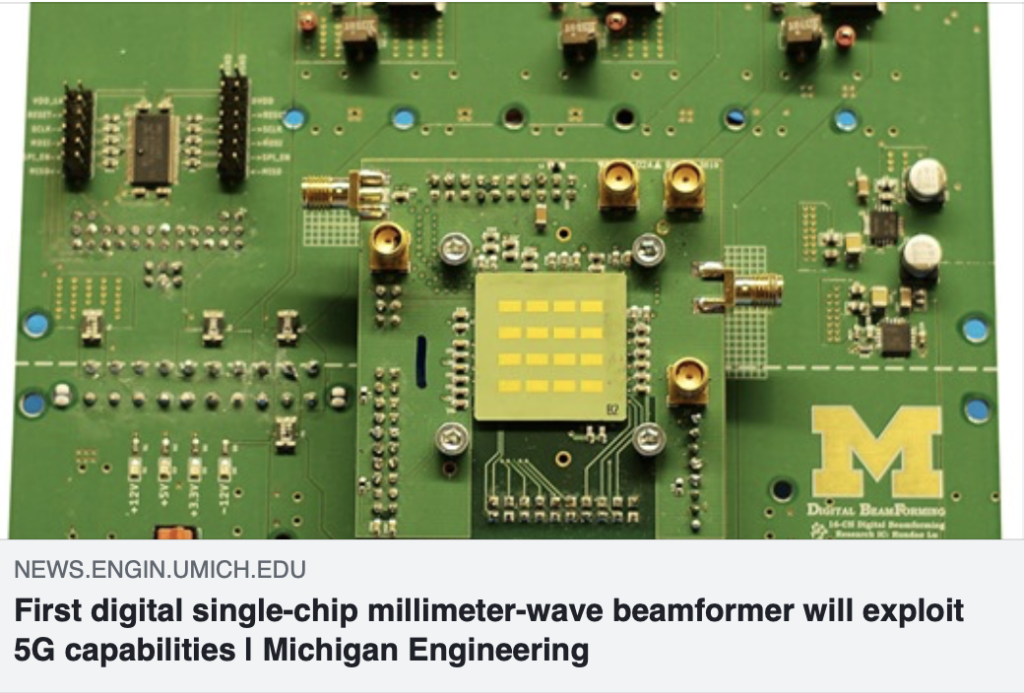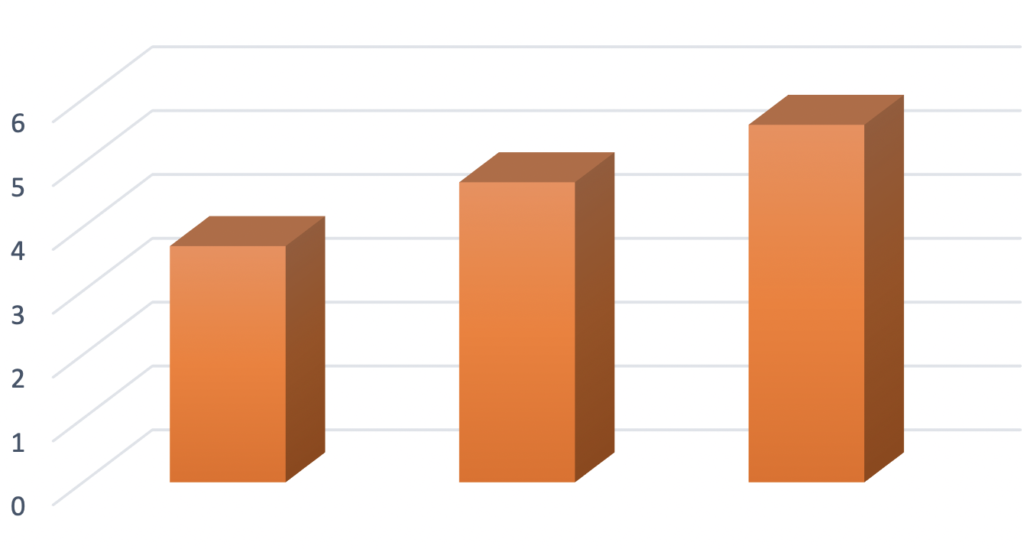5G used to be described as synonymous with millimeter-wave communications, but now when 5G networks are being rolled out all around the world, the focus is instead on Massive MIMO in the 3 GHz band. Moreover, millimeter-wave communications used to be synonymous with hybrid beamforming (e.g., using multiple analog phased arrays), often described as a necessary compromise between performance and hardware complexity. However, digital implementations are already on the way.
Last year, I wrote about experiments by NEC with a 24-antenna base station that carries out digital beamforming in the 28 GHz band. The same convergence towards digital solutions is happening for the chips that can be used in 5G terminals. The University of Michigan published experimental results at the 2020 IEEE Radio Frequency Integrated Circuits Symposium (RFIC) regarding a 16-element prototype for the 28 GHz band. The university calls it the “first digital single-chip millimeter-wave beamformer“. It is manufactured as a single chip using 40 nm CMOS technology and has a dimension of around 3 x 3 mm. The chip doesn’t include the 16 antenna elements (which are connected to it, see the image below and click on it to find larger images) but transceiver chains with low-noise amplifiers, phase-locked loops, analog-to-digital converters (ADCs), etc. While each antenna element has a separate ADC, groups of four adjacent ADCs are summing up their digital signals before they reach the baseband processor. Hence, from a MIMO perspective, this is essentially a digital four-antenna receiver.
One reason to call this a prototype rather than a full-fleshed solution is that the chip can only function as a receiver, but this doesn’t take away the fact that this is an important step forward. In an interview with the Michigan Engineering News Center, Professor Michael P. Flynn (who lead the research) is explaining that “With analog beamforming, you can only listen to one thing at a time” and “This chip represents more than seven years of work by multiple generations of graduate students”.
Needless to say, the first 5G base stations and cell phones that support millimeter-wave bands will make use of hybrid beamforming architectures. For example, the Ericsson Street Macro 6701 (that Verizon is utilizing in their network) contains multiple phased arrays, which can take 4 inputs and thereby produce up to 4 simultaneous beams. However, while the early adopters are making use of hybrid architectures, it becomes increasingly likely that fully digital architectures will be available when millimeter-wave technology becomes more widely adopted around the world.



